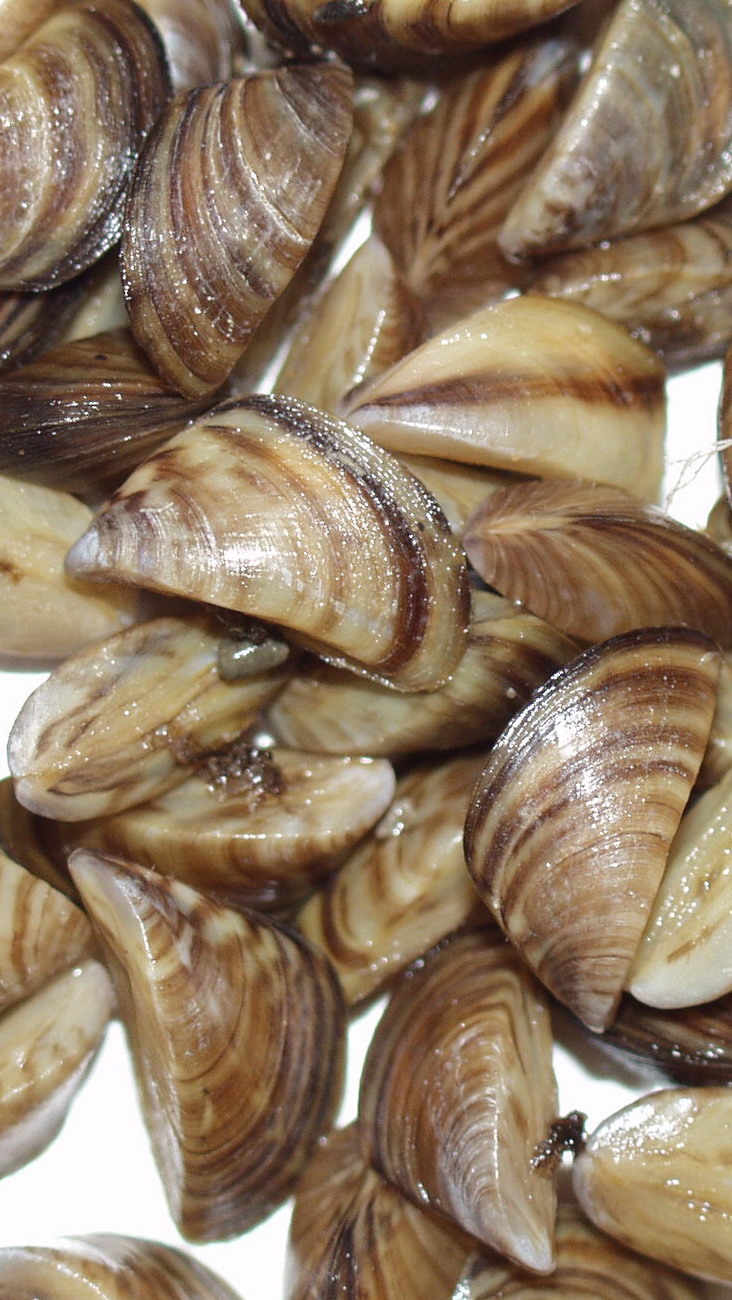Zebra Muscle
Zebra Mussels Dreissena polymorpha
Where did zebra mussels come from?
- Zebra mussels are native to the Black and Caspian Sea in Europe.
- They arrived into the Great Lakes in 1988 in the ballast water of ships.
Where have zebra mussels been found in Texas?
What do zebra mussels look like?
- Zebra mussels look like small clams, usually less than an inch long with a D-shaped shell. Usually the shell is yellowish-brown with alternating dark and light stripes.
- Zebra mussels use sticky byssal threads to attach tightly to any hard surface.
Why are zebra mussels a problem?
- Zebra mussels are a problem because they filter water, up to a liter a day, to eat plankton. Although this filtering action may clear up the water, clear water does NOT mean clean water and the clear water zebra mussels leave behind will often lead to algal blooms that are harmful to people. The clear water can also let UV rays damage fish eggs laid during the spawn.
- Larval fish and native mussels rely on this same plankton to survive.
- Zebra mussels also clog pipes by forming colonies inside of the pipes. Then the water cannot flow through the pipes as easily.
- Nationwide expenditures to control zebra mussels in electric generating and water plants are estimated in excess of $200 million/year.
How do zebra mussels spread?
- Transport by people is the primary vector for the spread of zebra mussels to unconnected waters.
- Zebra mussels will attach to a solid substrate and can be easily transported on recreational equipment.
- Zebra mussel larvae (veligers) are about the diameter of a human hair and are so small you can't see them without a microscope.
- The veliger floats in a water column for 1-5 weeks and then as it grows it begins to sinks and search for a hard surface on which to live and grow.
- It is illegal to release zebra mussels into a waterbody.
- Zebra mussels are NOT spread by birds.